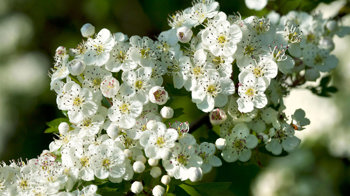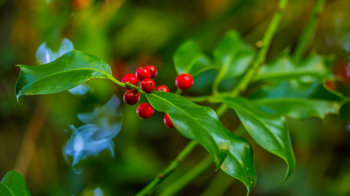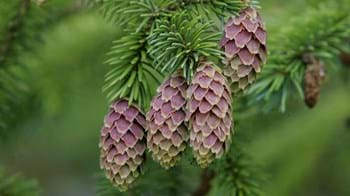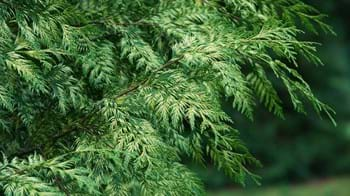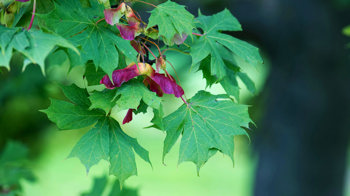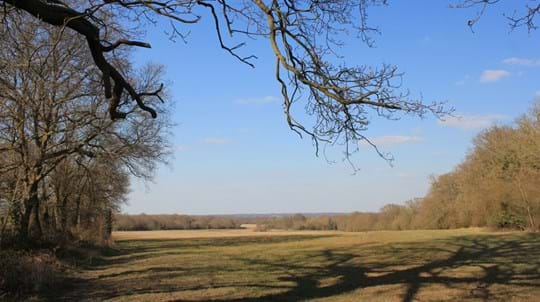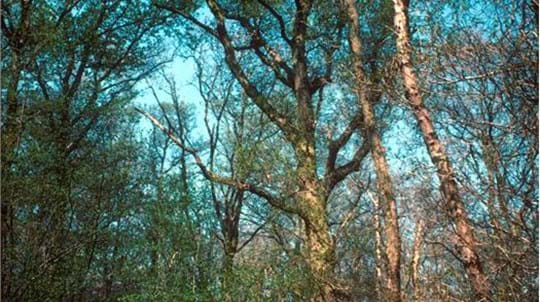
Great Ridings Wood
East Horsley

Woodland Trust wood
28.51 ha (70.45 acres)
TQ105539
Explorer 146
OS Landranger 187
Great Ridings Wood is a stunning 28-hectare (70-acre) woodland that is full to the brim with wildlife. Explore the scenic footpaths at this amazing site, keeping your eyes and ears open to the natural world.'
Features
- Parking nearby
- Public access
- Waymarked walk
- Broadleaved woodland
How to get to Great Ridings Wood
Great Ridings Wood sits in the heart of a more extensive woodland spanning around 150 hectares of Greenbelt between East Horsley and Effingham. It is bordered by Greatlee and Littlelee Wood to the north and Garden Grove and Park Wood to the south.
The whole of Great Ridings Wood lies within the Thames Basin Lowlands National Landscape Area.
Urban centres such as Guildford, Great Bookham, Fetcham and Leatherhead are within easy travelling distance of the wood by train, bus or car.
If you are driving via the M25, take the third exit at the Wisley Interchange Roundabout onto the A3 to Portsmouth, Guildford and Effingham. If you are travelling on the A3 from London take the second exit.
Turn left onto Old Lane, following signs for Effingham, Hatchford and Semaphore Tower. Take a right onto Horsley Road, left onto Howard Road and continue on Effingham Common Road. At the roundabout take the second exit onto Orestan Lane.
Alternatively, turn left onto Old Lane, following signs for Effingham, Hatchford and Semaphore Tower. Take a right onto Forest Road and turn left onto High Park Avenue. Please note that this is a restricted access road.
The nearest train station is at Horsley, which is approximately 20 minutes' walk away along Cobham Way and Norrels Drive.
Visit National Rail for more information.
The nearest bus stop is approximately 10 minutes' walk away on Forest Road which connects with an infrequent bus service (No 478).
To reach the wood, get off at Norrels Drive or High Park Avenue and follow either road until you reach the pedestrian entrance into the wood at the top of High Park Avenue.
More information and timetables can be found on Traveline.
From the north, the wood can be reached from Effingham Common using the Old London Road (Bridleway 131); from Effingham to the east, via Orestan Lane; and from the south, Dirtham Lane leads directly into the wood.
From East Horsley to the west, public footpaths lead through private roads from High Park Avenue, Norrels Drive and Woodland Drive to connect with public footpaths running through Ridings Wood.
As well as the formal public rights of way, there are also many informal unsurfaced paths crisscrossing the wood.
If you're riding a bike, a cycle route passes through this site, linking East Horsley to Effingham.
Facilities and access
The woodland connects the parishes of East Horsley and Effingham through a series of formal public rights of way used for walking, cycling and horse riding.
Please take care as most paths are unsurfaced and can be muddy, especially in winter. At drier times of the year, the London Road bridleway may potentially be used by wheelchair users and pushchairs.
It is worth noting that bikes can use the greenway cycle route and Old London Road Lane bridleway, and that horse riding is only permitted on Old London Road.
There is no public car park close to the wood. Limited roadside parking is available along Orestan Lane, and there is room for one or two cars at the end of High Park Avenue (a private road).
The rail station has public toilets which are only open during peak times, but further public toilets can be at the East Horsley Village Hall on Kingston Avenue.
Wildlife and habitats
Great Ridings Wood is dominated by maturing oak forest with a strong component of hornbeam and is known to be one of the last refuges for the hawfinch in Surrey.
Animals
The deadwood here attracts a range of invertebrates, as does the seasonal pond, which also is home to frogs and newts. As you look over the water see if you can spot the dragonflies, pond skaters and many more creatures here. During your stroll keep an eye out for the hawfinch, the UK’s largest finch, with a massive, powerful bill.
Trees, plants and fungi
As you explore, you may notice that there are lots of different types of woodland at Great Ridings, with different species of trees dominating different areas.
In some places you’ll see great big oak trees towering over the wood, while in others you’ll see hornbeam, often coppiced with several trunks coming from one single base.
Look out for areas where the Woodland Trust has removed some of the trees to let more light in, highlighted by the growth of younger trees, wildflowers and bramble which create more places for creatures to live.
Other native species here include ash, birch, field maple and hazel here. In spring, look out for bluebells, wood anemone and common spotted orchid on the woodland floor. You may also see scattered ornamental conifer trees from a previous era including Scots pine, monkey puzzles and western red cedars.
Habitats
The wood is made up of ancient woodland (Ridings Wood), a number of old plantations, shaws and former fields that have reverted to woodland over the past century or so.
Ridings Wood to the west of Old London Road and some other small areas are designated as ancient semi-natural woodland (ASNW). Ridings Wood is also designed as a County Wildlife Site (SNCI).
About Great Ridings Wood
The ancient woodland here can be traced back at least 1,000 years to Saxon times but could be even older. Ancient woodland usually contains ‘indicator’ plants that together give clues to its great age. Look out for bluebell, wood anemone and common spotted-orchid.
The site is split by Old London Lane, an ancient packhorse route from the Tillingborne Valley to London, and contains earth banks and ditches that once served as parish and manor boundaries. As you explore, see if you can find some of the banks that still stand up to six feet high. As you walk the Old London Road trackway consider this route may have been used to transport ironwork, gunpowder and banknote paper.

Credit: Bryan Wenham Baker / Alamy Stock Photo
Letting the light in
Purchased in 1996 with funds raised by a public appeal and generous donations from local councils. We manage this woodland on behalf of East Horsley Parish Council, creating a haven for wildlife. We've worked hard to remove invasive rhododendron and laurel that had plunged many native species into darkness. Ancient woodland wildlife and plants are now recovering, such as the speckled wood butterfly.
Things to do at Great Ridings Wood
Follow the red-topped waymarkers which guide visitors on a circular route of around 1.5km (0.9 miles), taking in the best bits of this woodland. Explore any of the 6km (3.7 miles) of footpaths, as well as the public bridleways that cross the site. The footpaths here form part of the Horsley Diamond Jubilee Trail, a 14.5km (9 mile) circular walk in the local area.

Visiting woods
Walking dogs in our woods
Dogs are welcome for walkies in our woods. Take a look at our tips and guidelines for ensuring we keep our woods safe and special for dogs and wildlife.
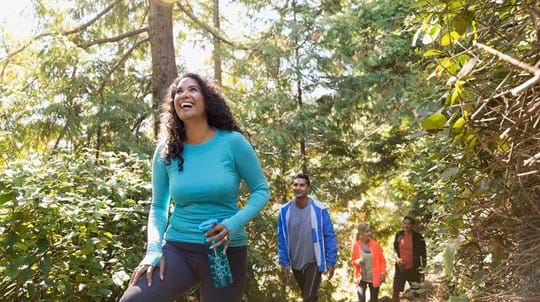
Visiting woods
Walking
Taking a walk in the woods is the easiest way to enjoy the outdoors and get closer to nature.















